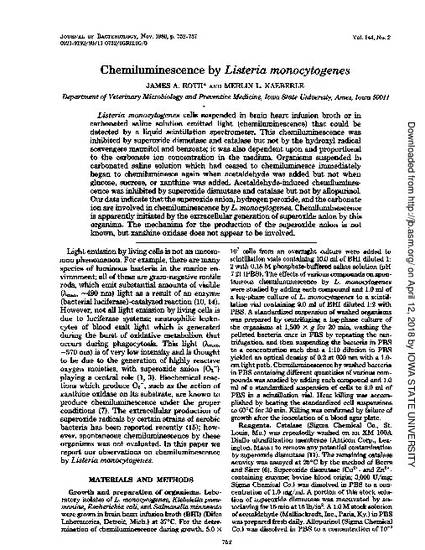
Listeria monocytogenes cells suspended in brain heart infusion broth or in carbonated saline solution emitted light (chemiluminescence) that could be detected by a liquid scintillation spectrometer. This chemiluminescence was inhibited by superoxide dismutase and catalase but not by the hydroxyl radical scavengers mannitol and benzoate; it was also dependent upon and proportional to the carbonate ion concentration in the medium. Organisms suspended in carbonated saline solution which had ceased to chemiluminesce immediately began to chemiluminesce again when acetaldehyde was added but not when glucose, sucrose, or xanthine was added. Acetaldehyde-induced chemiluminescence was inhibited by suproxide dismutase and catalase but not by allopurinol. Our data indicate that the superoxide anion, hydrogen peroxide, and the carbonate ion are involved in chemiluminescence by L. monocytogenes. Chemiluminescence is apparently initiated by the extracellular generation of superoxide anon by this organism. The mechanism for the production of the superoxide anion is not known, but xanthine oxidase does not appear to be involved.
Available at: http://works.bepress.com/james_roth/71/

This article is published as Roth, J.A., and M.L. Kaeberle. 1980. Chemiluminescence by Listeria monocytogenes. J Bacteriol, 144:752-757. Posted with permission.